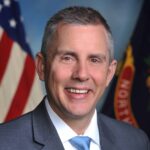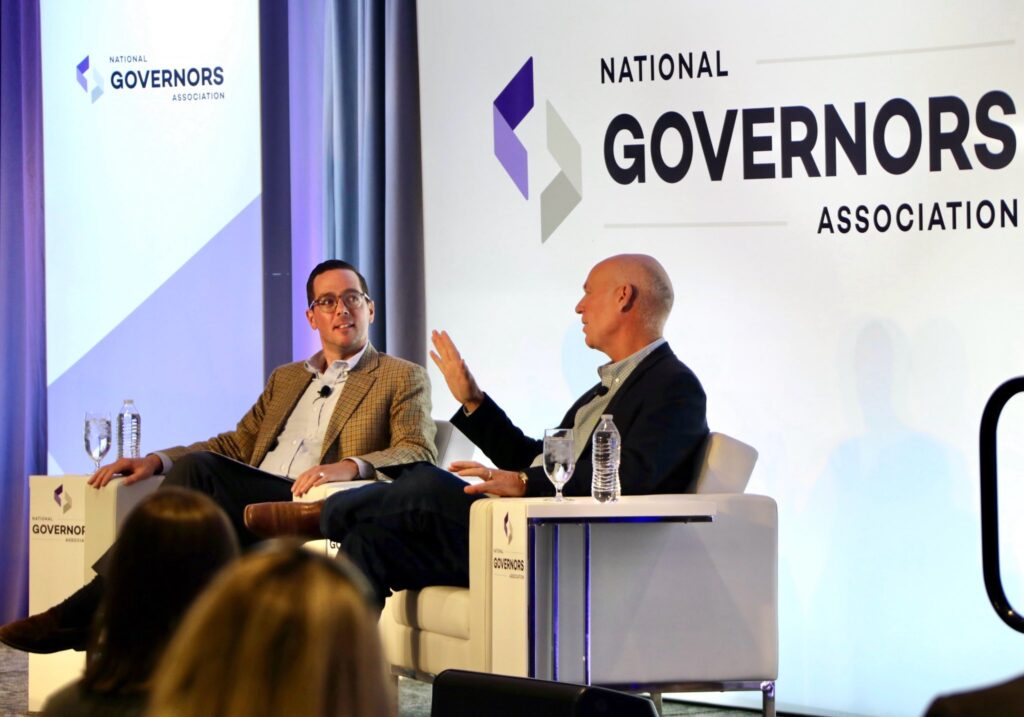
As the labor market begins to shift and federal workforce development priorities evolve, Governors are transforming the way they operate and oversee states’ workforce systems. Last week, North Dakota Governor Kelly Armstrong hosted the first annual Governor’s Workforce Summit, bringing together over 100 workforce development leaders from across the state to highlight the successes of North Dakota’s workforce development system, identify opportunities to enhance collaboration, and uplift the efforts of the Governor’s workforce subcabinet.
In a fireside chat with North Dakota Commerce Deputy Commissioner Katie Ralston-Howe, Governor Armstrong encouraged workforce leaders to be creative and agile in meeting the needs of workers and students, building strong relationships with employers, and navigating the changes being made in federal policy. The Governor also highlighted the role of the workforce subcabinet, which was created in June 2025 to develop unified goals and metrics for the state’s workforce system with representation from the Governor’s office, K-12 and postsecondary education, and state agencies leading workforce, economic development, and human services work. The subcabinet is working to break down silos, increase efficiency and accountability, and build capacity for innovation.
NGA Senior Policy Analyst Sophia Yager joined the summit to present information on Governors’ strategies to revamp the way they oversee their workforce systems to advance states’ economic priorities, including findings from NGA’s recent whitepaper Governors Reshaping Workforce Development: Turning WIOA Challenges into Workforce Solutions, written in partnership with the Harvard Project on Workforce.

Governor Kelly Armstrong
Governor Armstrong joins a growing number of Governors using executive orders and legislation to create interagency teams focused on workforce development, revamp state workforce agencies, and establish strategic frameworks for workforce development governance and policymaking.
In 2023, Oklahoma Governor Kevin Stitt formed the Workforce Transformation Task Force to make recommendations for improving the state’s workforce development system. The task force proposed the creation of a single entity to oversee the state’s workforce development strategy, and in June 2023, Governor Stitt signed the Oklahoma Workforce Transformation Act, establishing the Oklahoma Workforce Commission.
More recently, Delaware Governor Matt Meyer created the Delaware Office of Workforce Development to monitor workforce system trends, reduce duplicative efforts, and identify opportunities to align training with growing industries and occupations. The executive order also requires the Office and the Delaware Workforce Development Board to develop an agreement to define their partnership and collaboration and clarify which state agencies will administer which federal programs.

In August 2025, Montana Governor Greg Gianforte launched the 406 Jobs Plan, a strategic framework focused on developing 4 pathways to employment, ensuring 0 barriers to work, and linking to 6 high demand sectors coordinated by the Montana State Workforce Innovation Board. The executive order outlines the Governor’s priorities for the framework, including re-engaging individuals who have exited the labor force, upskilling workers for in-demand occupations, and identifying occupations and sectors where automation may serve as a short- or long-term solution to workforce gaps. Following the announcement of the plan, Governor Gianforte joined the National Governors Association’s biannual Workforce Development Policy Institute in Billings, Montana, to share insights on his 406 Jobs Plan and its role within his broader workforce development strategy.
Colorado Governor Jared Polis issued an executive order in May 2025 directing the Colorado Departments of Education, Labor and Employment, Higher Education, Regulatory Agencies, and Office of Economic Development and International Trade to integrate postsecondary education and training to improve flexibility and permeability of the system. A report is due to Governor Polis in December 2025 with recommendations for shared strategies and common principles of the new system, solutions to improve efficiency, and recommendations for the state legislature to codify findings.
Governor Armstrong’s Workforce Summit underscored the importance of responsive, resilient, and forward-looking state workforce systems, consistent with strategies Governors are implementing across the country. Coordinated interagency leadership will be critical to advancing Governors’ workforce development policy priorities, strengthening state economies, and better serving students, workers, and employers.












